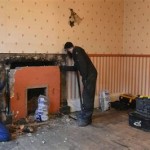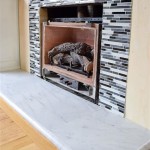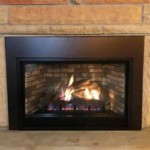How To Attach a Wood Mantel to a Brick Fireplace
Attaching a wood mantel to a brick fireplace is a common home improvement project that can significantly enhance the aesthetic appeal of a living space. A well-installed mantel provides a focal point and a surface for displaying decorative items. While the project is achievable for a homeowner with basic carpentry skills, it requires careful planning, accurate measurements, and the correct tools and materials. A secure and aesthetically pleasing installation depends on understanding the structure of the fireplace, selecting a suitable attachment method, and executing the steps with precision.
The process involves several key stages, beginning with preparation and material selection, followed by precise measurement and marking, and culminating in the actual attachment of the mantel to the brick. Each stage presents its own challenges and requires careful attention to detail. This guide will outline a comprehensive approach to securely and aesthetically attaching a wood mantel to a brick fireplace.
Understanding the Fireplace Structure and Building Codes
Before beginning any work, it is crucial to understand the structure of the brick fireplace and any relevant building codes. Fireplaces are typically constructed with a firebox, a chimney, and a surrounding brick facade. The brick facade is often supported by a concrete or masonry structure. It's important to determine if the brick is solid or veneer. Solid brick fireplaces are more structurally sound, while brick veneer is a thin layer applied over a different material. This difference can affect the choice of attachment method.
Building codes often dictate clearances between combustible materials, such as wood, and the firebox opening. These clearances are designed to prevent fires. Before installing a mantel, consult local building codes to ensure compliance. Minimum clearances typically range from 6 inches to 12 inches above the firebox opening, and these clearances can vary depending on the mantel's depth and the fireplace design. Failure to comply with building codes can result in fines or require removal of the mantel.
Additionally, inspect the brickwork for any signs of damage, such as cracks or loose bricks. Repair any damage before installing the mantel. A stable and structurally sound surface is essential for a secure installation.
Consider the size and weight of the mantel being installed. Larger, heavier mantels require more substantial support than smaller, lighter ones. The attachment method must be capable of bearing the weight of the mantel and any items placed on it.
Choosing the Right Attachment Method and Materials
Several methods can be used to attach a wood mantel to a brick fireplace, each with its own advantages and disadvantages. The choice of method depends on the weight of the mantel, the type of brick, and the desired aesthetic.
One common method involves using adhesive. Construction adhesive designed for masonry can be used to glue the mantel directly to the brick. This method is suitable for lighter mantels and brick veneer. However, it requires a clean and even surface for proper adhesion. The brick surface must be thoroughly cleaned and degreased before applying the adhesive.
Another method involves using masonry screws or anchors. This method provides a more secure attachment, especially for heavier mantels. Masonry screws are designed to grip into brick and concrete. Anchors are used to create a stronger hold in softer or damaged brick. To use this method, drill pilot holes into the brick, insert the anchors, and then screw the mantel into place. The size and number of screws or anchors required depends on the weight of the mantel.
A third method involves using a French cleat system. A French cleat consists of two interlocking pieces of wood, one attached to the mantel and the other to the brick fireplace. The cleat attached to the brick provides a strong and stable support for the mantel. This method allows for easy removal and reinstallation of the mantel if needed.
Regardless of the attachment method chosen, it is important to use high-quality materials. Use construction adhesive specifically designed for masonry, and choose masonry screws or anchors of appropriate size and strength. For a French cleat system, use hardwood lumber that is strong and resistant to warping.
In addition to the attachment materials, gather the necessary tools. These may include a tape measure, level, pencil, drill, masonry drill bits, screwdriver or impact driver, safety glasses, dust mask, and potentially a stud finder, depending on whether the fireplace has a wooden frame behind it.
When selecting a mantel, ensure it is made of kiln-dried wood to minimize warping or cracking over time. Consider the style and finish of the mantel to ensure it complements the overall design of the room. Also, factor in the depth of the mantel as it relates to the viewing angle of the fireplace; a mantel that is too deep could obstruct the view of the fire.
Step-by-Step Installation Guide
The installation process should follow a systematic approach to ensure accuracy and safety. Proper preparation and careful execution are crucial for a successful installation.
Step 1: Preparation and Measurement
Begin by thoroughly cleaning the brick surface. Remove any dust, dirt, or loose debris. Use a wire brush to scrub the brick if necessary. If using adhesive, degrease the brick surface with a solvent cleaner.
Measure the desired location for the mantel. Use a level to ensure the mantel will be installed horizontally. Mark the location on the brick wall using a pencil. Double-check the measurements to ensure accuracy.
Consider the height above the firebox opening. Adhere to local building codes regarding clearances. If necessary, adjust the mantel location to comply with these codes.
Step 2: Attaching the Mantel (Adhesive Method)
If using adhesive, apply a generous bead of construction adhesive to the back of the mantel. Follow the manufacturer's instructions for application.
Carefully position the mantel against the brick wall, aligning it with the marked location. Press the mantel firmly against the brick to ensure good contact.
Use temporary supports, such as shims or wood blocks, to hold the mantel in place while the adhesive cures. Follow the manufacturer's instructions for curing time, which typically ranges from 24 to 48 hours.
After the adhesive has cured, remove the temporary supports. Inspect the mantel for any signs of movement or instability.
Step 3: Attaching the Mantel (Masonry Screws or Anchors Method)
If using masonry screws or anchors, mark the locations for the pilot holes on the brick wall. Use a stud finder to determine if there are any wooden studs behind the brick wall, in which case, you would need lag bolts to secure the mantel.
Use a masonry drill bit to drill pilot holes into the brick at the marked locations. The depth of the pilot holes should match the length of the screws or anchors.
Insert the anchors into the pilot holes, if using anchors. Tap the anchors gently with a hammer to ensure they are fully seated.
Position the mantel against the brick wall, aligning it with the pilot holes. Insert the masonry screws through the mantel and into the anchors.
Tighten the screws until the mantel is securely attached to the brick. Do not overtighten the screws, as this could damage the brick or the mantel.
Step 4: Attaching the Mantel (French Cleat Method)
Attach one half of the French cleat to the back of the mantel. Use screws to securely fasten the cleat to the mantel, ensuring it is aligned properly.
Attach the other half of the French cleat to the brick wall. Use masonry screws or anchors to secure the cleat to the brick. Ensure the cleat is level and aligned with the desired mantel location.
Carefully lift the mantel and slide it onto the cleat attached to the brick wall. The two halves of the cleat should interlock, providing a secure and stable support.
Check the mantel for level and stability. If necessary, adjust the position of the cleat on the brick wall to ensure the mantel is perfectly level.
Step 5: Finishing Touches
After the mantel is securely attached, inspect the installation for any gaps or imperfections. Fill any gaps between the mantel and the brick wall with caulk or wood filler.
Sand any rough edges or surfaces on the mantel. Apply a finish to the mantel to protect it from moisture and wear. Choose a finish that complements the overall design of the room.
Clean the surrounding area and remove any debris. Inspect the installation one final time to ensure it is safe and aesthetically pleasing.
Installing a wood mantel on a brick fireplace can greatly enhance the look and feel of a room. By following these steps carefully, anyone can enjoy the added charm and value a well-mounted mantel can provide.

How To Install A Mantel On Brick Fireplace 1905 Farmhouse

How To Install A Floating Mantle The Easy Way In Just One Afternoon

How To Install A Mantel On Brick Fireplace 1905 Farmhouse

How To Install A Floating Mantle The Easy Way In Just One Afternoon

How To Install A Floating Mantle The Easy Way In Just One Afternoon

The Making Of A Slip Covered Mantel Made By Carli

Build A Mantel Over Brick Fireplace

How To Install A Mantel On Brick Fireplace 1905 Farmhouse

How To Install A Mantel Over Brick Fireplace Federal Brace

How To Install A Wood Mantel On Masonry Fireplace Remodelaholic
Related Posts








